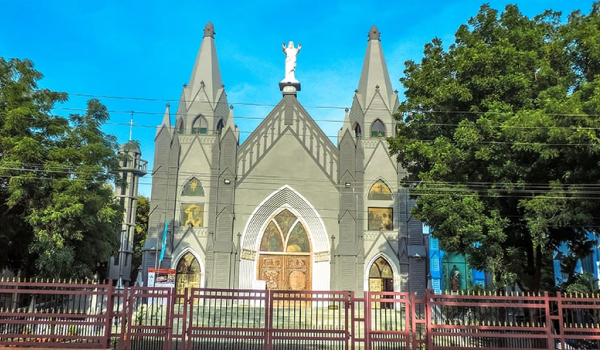
In a land area of 32,147 square kilometers, the diocese of Gulbarga includes four revenue districts of Bidar, Bijapur, Yadgir and Gulbarga in Karnataka state. Gulbarga, the largest city in north Karnataka state, is also the divisional headquarters. In the olden days it was known as 'Kalburgi' which in Kannada means land of stones or heap of stones.. Krishna and Bhima rivers flow through this land.
The total population of Gulbarga diocese is approximately 7,348,000, according to the census of 2016. While 76 percent of the majority are Hindus, 18 percent are Muslims. Catholicism is a minority in the diocese with approximately 7,730 followers. Many Christian denominations are prevalent in the region with Methodists making the majority.
Gulbarga diocese is predominantly a Kannada-speaking diocese. Kannada which is the official language of Karnataka is the main language across the diocese. There are people who speak Marathi, Telugu, Hindi, English and Konkanni.
Pope Benedict XVI created the diocese of Gulbarga comprising the four districts of North Karnataka on June 24, 2005, and appointed Bishop Robert Michael Miranda as the first bishop. The diocese was carved out of Hyderabad, Belgaum, and Bellary dioceses.
Gulbarga is around 200 kilometers west of Hyderabad and around 600 kilometers north of Bangalore. NH 9 connecting Hyderabad and Pune passes through Bidar. NH 13 connecting Bangalore-Sholapur-Pune passes through Bijapur. All trains from Mumbai to Hyderabad, Bangalore, Chennai, Coimbatore and Kanyakumari pass through Gulbarga city. There is also an inter-city train connecting Bijapur, Sholapur and Gulbarga. There are a number of government and private busses from Bidar, Gulbarga and Bijapur to Hyderabad, Pune, Bangalore, Hubli, Goa, Mumbai and other neighbouring cities. A domestic airport is coming up in Gulbarga.
The majority of the people in this part of the state are poor. Popularly known as the 'Hyderabad-Karnataka Region', it is the most backward region of Karnataka. There are only two kinds of people: the land lords and the daily wage earners. The vast majority are the coolies or the landless labourers who live on daily wages. Unfortunately, they do not get work all through the year. In many places, they do not have work even for six months in a year. The small and marginal farmers have only arid land in their name and do not make any profit from their farms. Discrimination on the basis of caste still prevails.
Agriculture is the backbone of the economy in this region. Jowar, rice, wheat, cotton, ground nuts, oilseeds, vegetables, sugarcane, spices and cereals are grown in the entire area. Animal husbandry and sheep rearing is a common occupation. This part of the state is declared as a horticultural zone by the government. All the three districts of the diocese are figuring among the 200 most backward regions in the country.
Though the region can boast of a rich religious and cultural heritage, the region has a highest rate of illiteracy and the lowest standard of education in the entire state. The number of people coming under the category of below poverty line is the highest in the region. There exists the great division between the rich and the poor, the landlords and the landless. The lowest industrial growth and the lowest per capita income is also the cause of acute illiteracy. Highest number of child labourers, high rate of unemployment, under employment and seasonal employment are also the causes. The diocese has 56.69 percent literacy in which 67.97 percent men are literate and only 47.34 percent women are literate.
The existence of a number of temples with their historical background speaks of a rich spiritual and cultural heritage. The 'Bidri Art' which found patronage of the Mughal Kings is popular. Lambani dance by a tribe called Lambanis, kolata (dancing with sticks), bhajan singing and folk songs (Janapada) are the popular folk arts of this region. Even the Christian festivals like Christmas and Easter are celebrated by singing the bhajans and songs all through the night by the localites.
Though the region has given birth to great poets and laureates, the one person who has definitively made an impact in the religious, social and literary field, and revered even today in the entire region is Basavanna of Bagewadi.